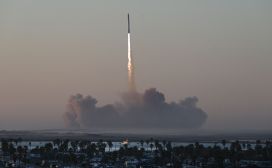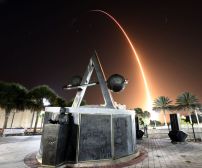The U.S. Strategic Command today announced it has signed an agreement with the Canadian Department of National Defence to share tracking data on space objects that may pose a risk to both space flight and public safety.
The agreement enhances multinational space cooperation by streamlining the process for the Canadian Joint Operations Command’s Space Operations Cell to request specific information gathered by U.S. Stratcom’s Joint Space Operations Center at Vandenberg Air Force Base in California.
Adm. Cecil D. Haney, the commander of U.S. Strategic Command, characterized the agreement as “mutually beneficial” and said it will “provide for greater space flight safety and increase our national security.”
 Stratcom leverages a global network of 29 optical and radar sensors, known as the Space Surveillance Network, to track more than 23,000 objects as small as 10 centimeters in diameter currently in orbit around the Earth. Of those, only about 1,100 are active satellites. The rest is orbital debris. In addition, there are hundreds of thousands of pieces of debris that measure smaller than 10 centimeters and are too small to track or catalogue.
Stratcom leverages a global network of 29 optical and radar sensors, known as the Space Surveillance Network, to track more than 23,000 objects as small as 10 centimeters in diameter currently in orbit around the Earth. Of those, only about 1,100 are active satellites. The rest is orbital debris. In addition, there are hundreds of thousands of pieces of debris that measure smaller than 10 centimeters and are too small to track or catalogue.
The debris is the result of decades of U.S. and Russian spaceflight, and includes everything from derelict spacecraft and abandoned space launch vehicles, to tiny fragments of vehicles created as a result of explosions or collisions.
One of the most notable space debris events occurred in 2007, when the Chinese government launched an interceptor missile in an anti-satellite weapon test that destroyed one of its decommissioned weather satellites. According to a report published Jan. 8 by the Congressional Research Service, “this intentionally destructive event created the most severe orbital debris cloud in space flight history, generating more than 3,000 pieces of debris larger than 10 [centimeters] and an additional 150,000 pieces larger than 1 [centimeter].”
Experts estimate the majority of the debris particles created by the Chinese missile test will remain in orbit for at least a century.






